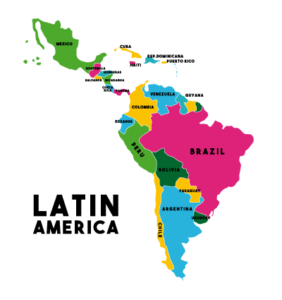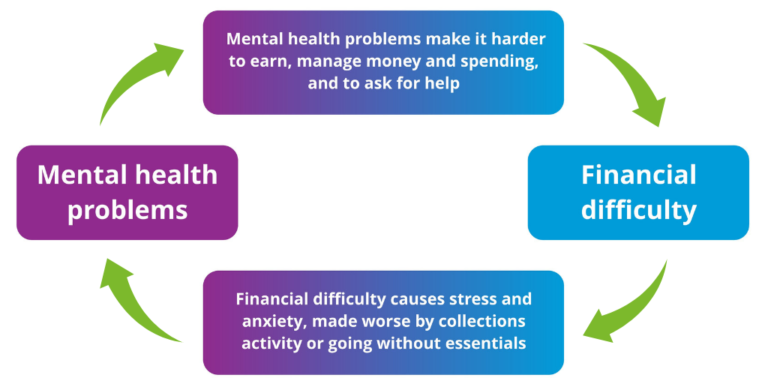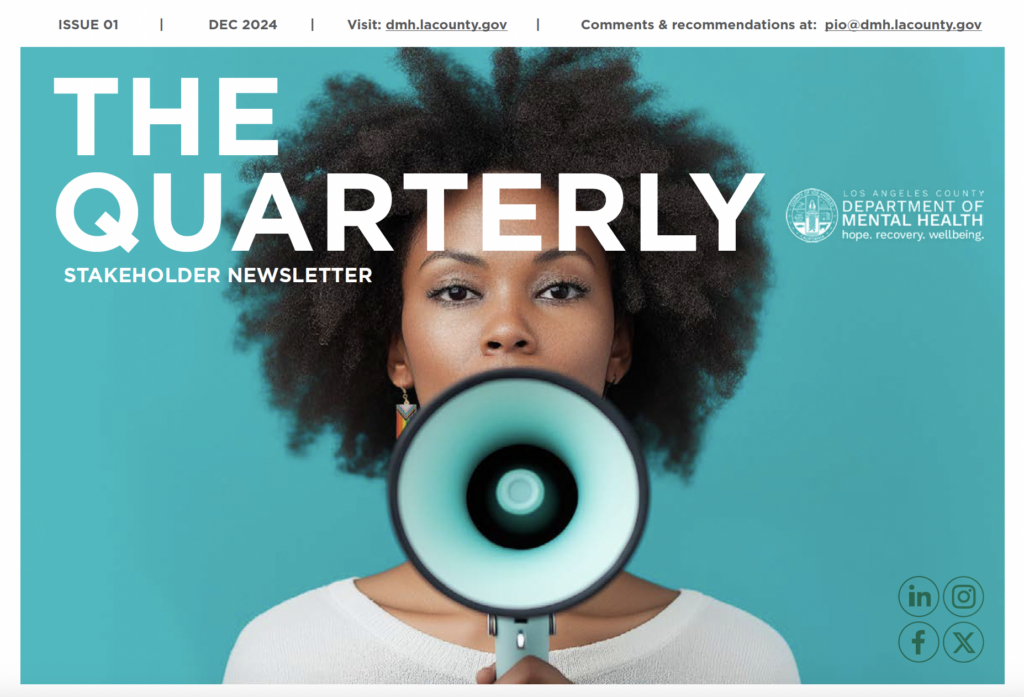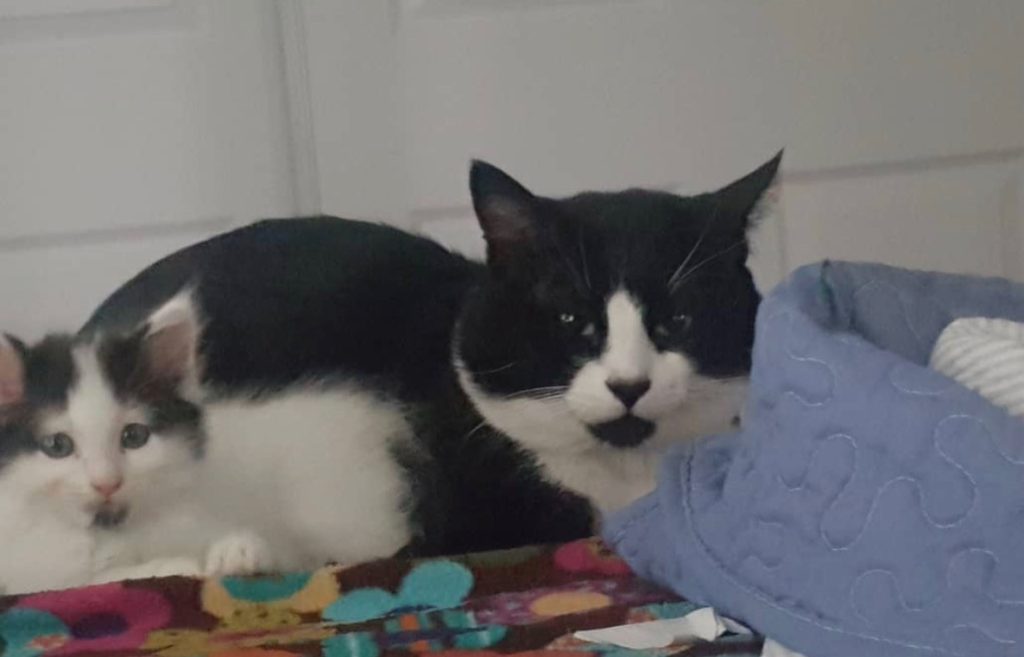
Check Out The Q2 2025 Issue of Our Quarterly Stakeholder Newsletter
The Anti-Racism, Inclusion, Solidarity and Empowerment (ARISE) Division, and the Los Angeles County Department of Mental Health, are excited to share the next issue of the Quarterly Stakeholder newsletter, designed specifically for you — our stakeholders, partners, and most importantly, individuals with lived experience. Whether you identify as a mental health consumer, advocate, peer supporter, or ally, this space belongs to you. The Newsletter is a platform for your stories, experiences, and voices to be heard, valued, and shared. We hope that you enjoy this issue and look forward to receiving and sharing your original content for the next issue!
To read the newsletter, follow this link.
Para leer su Newsletter en español, siga este enlace.
한국어로 된 뉴스레터를 읽으려면 이 링크를 따르십시오.
Check Out The Q1 2025 Issue of Our Quarterly Stakeholder Newsletter
The Los Angeles County Department of Mental Health and its Anti-Racism, Inclusion, Solidarity and Empowerment (ARISE) Division are excited to share the next issue of the Quarterly Stakeholder newsletter, designed specifically for you — our stakeholders, partners, and most importantly, individuals with lived experience. Whether you identify as a mental health consumer, advocate, peer supporter, or ally, this space belongs to you. The Newsletter is a platform for your stories, experiences, and voices to be heard, valued, and shared. We hope that you enjoy this issue and look forward to receiving and sharing your original content for the next issue!
To read the newsletter, follow this link.
Para leer su Newsletter en español, siga este enlace.
한국어로 된 뉴스레터를 읽으려면 이 링크를 따르십시오.
Welcome to LACDMH’s Quarterly Stakeholder Newsletter
The Anti-Racism, Inclusion, Solidarity and Empowerment (ARISE) Division, and the Los Angeles County Department of Mental Health, are excited to bring back the Quarterly Stakeholder newsletter, designed specifically for you — our stakeholders, partners, and most importantly, individuals with lived experience. Whether you identify as a mental health consumer, advocate, peer supporter, or ally, this space belongs to you. The Newsletter will be a platform for your stories, experiences, and voices to be heard, valued, and shared. We hope that you enjoy the launch issue and look forward to receiving and sharing your original content starting in 2025!
To read the newsletter, click on the cover image or follow this link.
Para leer su Newsletter en español, siga este enlace.
한국어로 된 뉴스레터를 읽으려면 이 링크를 따르십시오.
A Message from ARISE Staff Council: Land Acknowledgement
You settle into your hotel room, turn on the TV, and see the hotel’s homepage display a land acknowledgment. As you explore the city, you notice land acknowledgments at museums and local businesses, and contemporary Indigenous art and exhibits are everywhere. It happens to be National Reconciliation Week. At your next destination, just a short plane ride away, Indigenous art and language are prominently featured in public signage and on TV. You feel awe, peace, and hope — this is not a dream. This is present-day Sydney, Australia, and New Zealand. These societies are deeply engaged in land acknowledgment and much more. Suddenly, L.A. County’s recent adoption of a land acknowledgment feels like a tangible first step on the path to healing and reconciliation, and LACDMH is well-positioned to lead the way.
On November 1, 2022, the L.A. County Board of Supervisors unanimously adopted a Land Acknowledgment for the County. You may have heard it at County events, or most recently from Director Dr. Lisa H. Wong at our last LACDMH Town Hall meeting. You may be wondering: Why should I care?
At its core, the Countywide Land Acknowledgment centers the First Peoples by honoring their strength, resilience, and ongoing contributions to Los Angeles County. It emphasizes that they are still here and remain connected to their ancestral lands. Land acknowledgments can create space for truth-telling and pave the way for action and healing — if we let them.
During a nine-month engagement process, local tribes helped shape the acknowledgment and contributed to a report titled We Are Still Here: A Report on Past, Present, and Ongoing Harms Against Local Tribes (known as the Harms Report). This report reflects their thoughts, needs, and recommendations for how L.A. County can begin to address past wrongs, restore relationships with the land and people, and dismantle systemic barriers.
Building on these efforts, the Countywide Land Acknowledgment Implementation Guide offers practical advice on delivering acknowledgments and, more importantly, guidance on moving beyond words. While LACDMH operates the American Indian Counseling Center, there is much more we can do to improve the mental health outcomes of American Indian and Alaska Native (AIAN) communities — outcomes deeply impacted by settler colonialism and the disruption of traditional healing systems. By engaging with AIAN staff and consumers, we have the chance to make meaningful, systemic commitments to Anti-Racism, Inclusion, Solidarity, and Empowerment.
How will you commit to learning and taking action?
Submitted by Dr. Andrea N. Garcia, co-chair of DMH’s Anti-Racism, Inclusion, Solidarity and Empowerment (ARISE) Staff Advisory Council.
The LACDMH 2023 Cultural Competence Plan Report
By Sandra T. Chang, Ph.D., Cultural Competency Unit Program Manager
The ARDI Division – Cultural Competency Unit (CCU) is celebrating its completion of the annual 2023 Cultural Competence Plan Report, which is based on the Cultural Competence Plan Requirements (CCPR) set forth by the California Department of Health Care Services (DHCS). The report is a systemwide narrative that features the remarkable work by LACDMH programs to serve L.A. County communities with culturally and linguistically mindful, inclusive, equitable, and relevant approaches. For 2023, the CCU interacted with over 60 departmental sources of information inclusive of administrative and clinical programs. All these efforts culminated in comprehensive and informative report, which was praised during the 2023 External Quality Review Organization (EQRO) system review during the week October 16th.
The 460-page report is organized in the following eight areas of required content:
- Criterion (CR)1: Overview of LACDMH’s commitment to cultural, linguistic and equitable service delivery
- CR 2: Data, assessment, and analysis of service delivery by race/ ethnicity, gender identity, age group, language, Service Area, Medi-Cal and 133% Federal Poverty Level and three MHSA components
- CR 3: Strategies to reducing racial/ethnic, cultural and linguistic disparities
- CR 4: Demographics, goals and activities of the LACDMH Cultural
Competency Committee
- CR5: Cultural competence-related trainings available to the workforce
- CR 6: Efforts to develop a culturally and linguistically diverse workforce
- CR 7: Linguistic capacity of the system
- CR 8: Adaptation of services to serve the community in innovative ways
It is my professional joy and pride as the CCU’s program manager to publicly recognize and praise the staff who made this monumental endeavor possible:
- Hyun Lee, Clinical Psychologist II
- Guadalupe Aguilar, Intermediate Typist Clerk
- Christine De La Cruz, Mental Health Services Coordinator II
Their steadfast commitment, dedication, and relentless teamwork provided a strong foundation for the long journey leading to the successful completion of the report. A special acknowledgment is given to Dr. Hyun Lee for her multiple contributions throughout the process of report development. Additionally, other members of the CCU and the ARDI Division provided invaluable support by submitting content in their areas of expertise and serving as internal reviewers of the report at the time it was in draft form. Special thankfulness and appreciation are expressed to Dr. Rebecca Gitlin, Dr. Luis Guzman, Dr. Anna Yaralyan, Mr. Julio Celada, Ms. Regina Ramirez, Ms. Kelly Wilkerson, and Ms. Adriana Carrillo. Additionally, the team effort leading to the 2023 Cultural Competence Plan Report completion included the remarkable support received from the Prevention Bureau – ARDI Division management as well as members of the executive management team. The CCU is particularly grateful to Ms. Connie Draxler – Acting Chief Deputy Director, Ms. Mary Barraza – Senior Deputy for Prevention and Child Wellbeing Administration, Dr. Robert Byrd – Prevention Bureau Deputy Director and Ms. Mirtala Parada Ward – ARDI Division Program Manager III.
Together, the ARDI Division – CCU acknowledges and extends its gratefulness to all programs who provided key information for inclusion in the 2023 Cultural Competence Plan Report. These key programs exemplify the collective impact of day-to-day departmental operations in service of Los Angeles County’s culturally and linguistically diverse communities. We take the opportunity to honor them for their invaluable contributions. In the words of the famous philosopher Voltaire, “Appreciation is a wonderful thing: it makes what is excellent in others belong to us as well.” Thank you all for sharing your subject matter expertise, time, and quality reporting leading to the comprehensive systemwide report.
- Administrative Services Division
- Assisted Outpatient Treatment Program (AOT)
- CalWORKs (California Work Opportunity and Responsibility for Kids) and General Relief Opportunities for Work (GROW) Programs
- Chief Information Office Bureau (CIOB)
- Application Development Team
- VSEE
- Child Welfare Division
- Crisis Residential Treatment Program
- DMH/DHS Collaboration Program
- Emergency Outreach and Triage Division
- Law Enforcement Teams
- Psychiatric Mobile Response Team (PMRT) and Therapeutic Transport Team (TTT)
- School Threat Assessment Response Team (START) Program
- Enriched Residential Care Program
- Faith-Based Advocacy Council
- Full Service Partnership
- Geriatric Evaluation Networks Encompassing Services Intervention Support (GENESIS) Program
- Help Line-ACCESS Center
- Homeless Outreach Mobile Engagement (HOME) Program
- Housing and Job Development Division
- Housing and Supportive Services Program
- Human Resources Bureau (HRB)
- Linkage Programs
- Maternal Mental Health
- Men’s Community Re-Entry Program
- MHSA Administration and Oversight Division
- Outpatient Services Division
- Transition Age Drop-In Centers
- Wellness Outreach Workers (WOW)
- Prevention and Early Intervention (Older Adults) – Anti-Stigma and Discrimination Team
- Older Adult Service Extenders
- Patient’s Rights Office
- Peer Run Centers
- Prevent Homelessness and Promote Health
- Prevention Bureau
- Anti-Racism, Diversity and Inclusion (ARDI) Division
- Community Ambassador Network
- Cultural Competency Committee (CCC)
- Cultural Competency Unit (CCU)
- Health Neighborhoods
- Language Assistance Services Team
- LBGTQIA2-Clinical Consultation Team/Champion Network
- My Health Los Angeles (MHLA)
- Promotores de Salud & United Mental Health Promoters Programs
- School-based Community Access Point
- Spanish Support Groups
- Speakers Bureau
- Underserved Cultural Communities (UsCC) Unit and Subcommittees
- Public Information Office (PIO)
- Quality Assurance (QA) Division
- Quality, Outcomes and Training Division (QOTD)
- Quality Improvement (QI) Unit
- Training Unit
- Stakeholder Process
- Community Leadership Team (CLT)
- Telemental Health Program
- Transition Age Navigation Team
- Transition Age Youth Drop-In Centers (TAY)
- Urgent Care Centers
- Veteran Peer Access Network (VPAN)
- Women’s Community Re-Entry Program
The 2023 Cultural Competence Plan report will soon be accessible at the Cultural Competence Unit’s web page: Cultural Competency Unit – Department of Mental Health (lacounty.gov)
National Hispanic Heritage Month
 Each year, Americans observe National Hispanic Heritage Month from September 15 to October 15, by celebrating the histories, cultures and contributions of American citizens whose ancestors came from Spain, Mexico, the Caribbean and Central and South America.
Each year, Americans observe National Hispanic Heritage Month from September 15 to October 15, by celebrating the histories, cultures and contributions of American citizens whose ancestors came from Spain, Mexico, the Caribbean and Central and South America.
The observation started in 1968 as Hispanic Heritage Week under President Lyndon Johnson and was expanded by President Ronald Reagan in 1988 to cover a 30-day period starting on September 15 and ending on October 15. It was enacted into law on August 17, 1988, on the approval of Public Law 100-402.
The day of September 15 is significant because it is the anniversary of independence for Latin American countries Costa Rica, El Salvador, Guatemala, Honduras and Nicaragua. In addition, Mexico and Chile celebrate their independence days on September 16 and September 18, respectively. Also, Indigenous Peoples’ Day (October 11) falls within this 30 day period.
Below is a compilation of on-line articles that highlight interesting facts about Independence Day festivities in the countries mentioned above, courtesy of the Prevention Bureau’s Anti-Racism, Diversity and Inclusion (ARDI) Division – Cultural Competency Unit:
Thanksgiving from the Lived Experience of an Indian
by Sunnie Whipple, former co-chair of the LACDMH Cultural Competency Committee (2018-2021)
Have you ever wondered?
- A turkey’s head is bald without feathers, so why don’t we call it a “Bald Turkey;” compared to an eagle whose head is covered with feathers, that gets called a “Bald Eagle?” This makes no sense.
- Everyone is thankful, except the turkey who gets eaten. So, thankfulness is dependent on whose stomach gets filled—although the turkey’s stomach gets filled with stuffing, so it can’t be thankful cause it’s dead.
- My grandson is part of a new generation getting his culture instilled in him through ceremonies like name-giving at the Sundance, or sitting with a drum group at powwows, which is consistent with his love for the turkey drumstick.
- Why are we not more thankful to the Creator for providing? We often just think about the food.
- Indians who celebrated Thanksgiving…I’m one of them, but not necessarily like others think. And I don’t mind being called “an Indian.” I’ve been called an Indian all my life. I don’t mind celebrating Thanksgiving either. The food is good and so is getting together with family and friends.
So How did I celebrate Thanksgiving at home as a boy? Let me tell you.
As a boy, Thanksgiving wasn’t a big celebration. The attitude of the dominant culture was primarily negative toward us Native Americans (still called Indians back then), and we were more interested in keeping our family and community alive. In an era where reservation settlement, forced relocation, assimilation efforts, termination goals, and everything was “cowboys versus Indians,” (and the Indians usually lost), there wasn’t that much to be thankful for other than the presence of family and a deeper understanding that the Creator was still looking out for us. We never had a problem being thankful to God. We were thankful to survive the oppressions we faced and for having each other. There weren’t that many jobs on the reservation so the economy was bad and most families had to depend on food commodities. Along with an introduction to alcohol, which affected the well-being of many families, we went from being independent hunters and gathers, to being dependent on the federal government. So, we just didn’t get very connected with the history or the celebration of Thanksgiving.
National Recovery Month: Locked Up from Employment

The cycle of mental health stressors and financial burden; image courtesy of Money and Mental Health Policy Institute
by Johana Lozano, Cultural Competency Committee Co-Chair
Finding work is an overwhelming task for anyone. However, it is a distressful journey for individuals who have a behavioral condition and a history of incarceration. Discrimination, stigma, and mental illness caused from being in a correctional institution all contribute to low hiring rates. As a peer specialist at the Peer Resource Center, Laura Kerr uses her lived experience to help citizens of Los Angeles County find meaningful employment. Her group, entitled “Work Readiness,” is more than just a handout. This support group provides career pathways, guidance, and training to improve upon basic job serving skills, understand employer expectations, and learn life skills needed for self-sufficiency.
“There is such a thing as work etiquette that we often don’t know about,” said Kerr.
As part of National Recovery Month, she wanted to emphasize the importance of learning how to earn, manage, and spend money when people have a history of imprisonment. A former participant of her group who is now fully employed at an esteemed entertainment company spoke highly of his experience.
“The group provided a great support system that kept me engaged and accountable. They genuinely cared and knew what I was going though. She checked in to see why I had stopped coming to the group. That was really helpful,” the participant, who wanted to remain anonymous, said. Within one year on the job, the participant was promoted twice and received a bonus at work.
If you would like to learn more about this gathering or want to participate, please contact Laura Kerr at LKerr@dmh.lacounty.gov
Information about the group is listed below:
WORK READINESS GROUP
1 to 3 p.m. on 1st and 3rd Thursdays of the Month (audio only)
+1 323-776-6996
Conference ID: 612 716 535#
Food for Thought
by Johnathan Maravillas, Community Member
Through food, we are exposed to the culinary artists’ culture and way of life. Similarly, to cooking competitions like Master Chef and the Great British Bake Off, I joined a competition where the chefs had to use solemnly native Mesoamerican ingredients. This opportunity came during a time in my life when I was connecting with my native roots. As a native of the Wixárica subtribe from Nayarit, Mexico, I want to invite you to find your element in Mesoamerican cuisine. Here are some vegetables whose origins you might not have realized: Squash, chiles, tomato, tomatillo, zapote, avocado, and papaya are native to the Mesoamerican region while peppercorn, cilantro, aloe vera, rosemary, lettuce, and garlic are foreign to the Americas.
Cooking the traditional cuisine of my ancestors is part of my self-care. My recovery journey started when I realized my family was not spared from generational trauma. My great, great grandparents were taught to hide and deny their Wixárica roots to prevent persecution and death. Thankfully, I have stopped the pattern and no longer pass down the shame my parents battled with for years. My son embraces his identity and takes part in native activities. Both my wife and I use traditional ways of cooking and farming that were passed down from our ancestors. We share this knowledge with our son and neighbors. From making ovens from adobe, to participating in a temascal (Mexican sweat lodge), we continue to persevere and heal our family and communities. I leave you with some food for thought. How has your cooking helped others? What dishes do you identify with and are close to your heart? What Mesoamerican ingredients will you eat today?
Jonathan Maravillas is an East L.A. native and entrepreneur. He runs his own business cleaning windows and homeschools his son along with his wife in the tradition of native wisdom. They were part of the Native Based Cultural Center which is now closed. His family is working to start a new center to teach native practices of Mesoamerica free of charge. To get involved, please contact Mr. Maravillas at (323) 404-4730.
Untitled Poem
Blog Search
About This Blog
The project has its roots in the Cultural Competency Committee’s “Share your Culture” initiative introduced by Co-Chairs, Mr. Sunnie Whipple and Ms. Bernice Mascher. This initiative engaged community members, consumers, family members, peers and staff alike in presenting on different aspects of their culture; thereby fostering cross-cultural learning, understanding, sensitivity, and appreciation.
The Cultural Traditions and Connections Blog came out of the need to connect with our committee members, inclusive of consumers, family members, peers, advocates, community members, colleagues and co-workers. It was fueled by the need to tell everyone that we care about what is happening within our families, our neighborhoods, our communities, our country, and our world.
We can all share and find nurturing connections by engaging in reading heartwarming articles and reflections that help us relax our tired minds, draw smiles across our faces, and comfort our spirits with a sense of collective caring found in the richness of who we are as human beings.
This blog’s content is managed by the members and staff of the Cultural Competency Committee.




